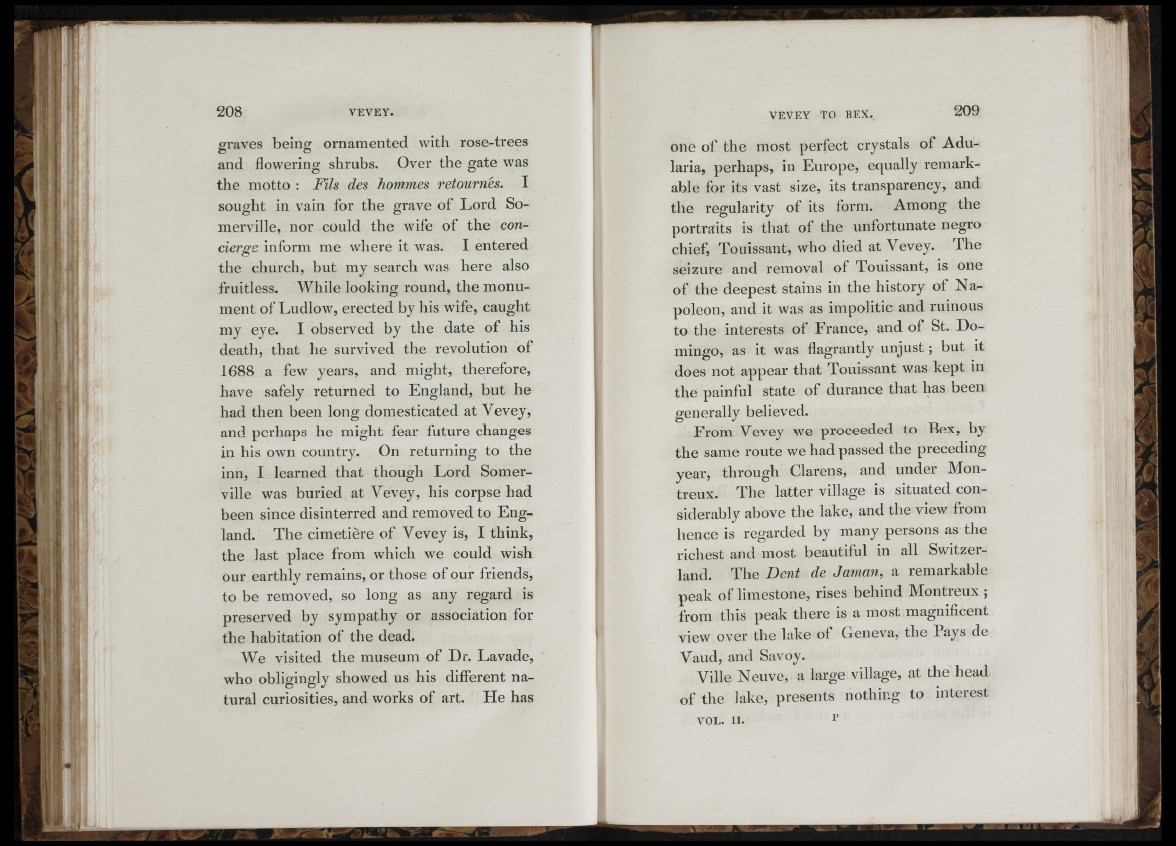
i
l e
i!
\ÍA t
graves being ornamented O O with rose-trees
and flowering shrubs. Over the gate was
the motto : Fils des hommes retournes. I
sought in vain for the grave of Lord Somerville,
nor could the wife of the concierge
inform me wliere it was. I entered
the church, but my search was here also
fruitless. While looking round, the monument
of Ludlow, erected by his wife, caught
my eye. I observed by the date of his
death, that he survived the revolution of
1688 a few years, and might, therefore,
have safely returned to England, but he
had then been long domesticated at Vevey,
and perhaps he might fear future changes
in his own country. On returning to the
inn, I learned that though Lord Somerville
was buried at Vevey, his corpse had
been since disinterred and removed to England.
The cimetière of Vevey is, I think,
the last place from which we could wish
our earthly remains, or those of our friends,
to be removed, so long as any regard is
preserved by sympathy or association for
the habitation of the dead.
We visited the museum of Dr. Lavade,
who obligingly showed us his different natural
curiosities, and works of art. He has
one of the most perfect crystals of Adularla,
perhaps, in Europe, equally remarkable
for its vast size, its transparency, and
the regularity of its iorm. Among the
portraits is that of the unfortunate negro
chief, Toiiissant, who died at Vevey. The
seizure and removal of Touissant, is one
of the deepest stains in the history of Napoleon,
and it was as impolitic and ruinous
to the interests of France, and of St. Domingo,
as it was flagrantly u n ju s t; but it
does not appear that Touissant was kept in
the painful state of durance that has been
generally believed.
From Vevey we proceeded to Bex, by
the same route we had passed the preceding
year, through Clärens, and under Montreux.
The latter village is situated considerably
above the lake, and the view from
hence is regarded by many persons as the
richest and most beautiful in all Switzerland.
The Dent de daman, a remarkable
peak of limestone, rises behind Montreux;
from this peak there is a most magnificent
view over the lake of Geneva, the Pays de
Vaud, and Savoy.
Ville Neuve, a large village, at the head
of the lake, presents nothing to interest
VOL. II. 1’